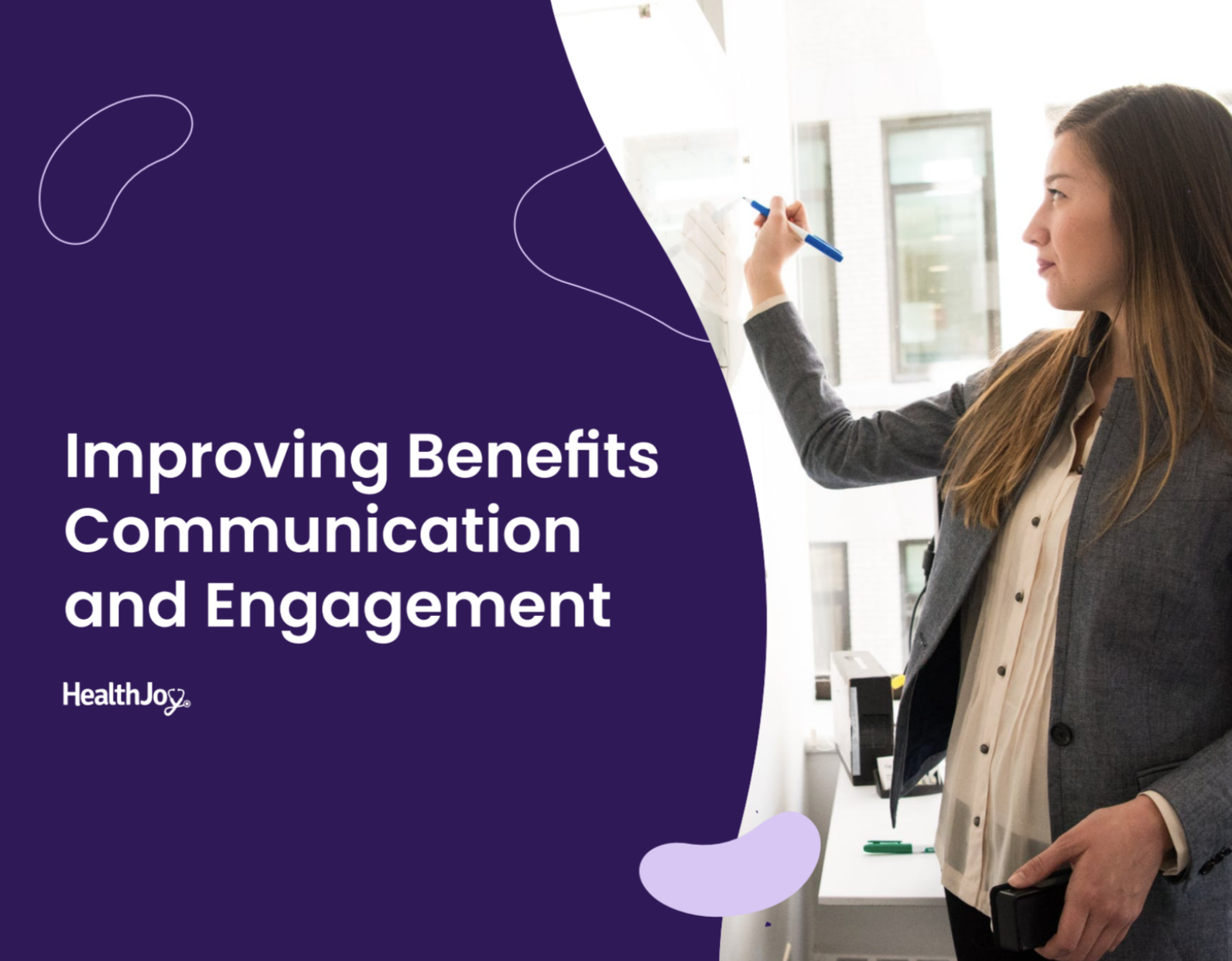To Tackle Employee Healthcare Expenses, Help Them Become Better Consumers
For years, we’ve said that “healthcare spending is skyrocketing” or “the cost of care is climbing.” Employers will pay an average of over $16,000 —...
Connected Navigation Platform
Guiding to high-value care
Behavioral Health
Foster a mentally healthy workplace
EAP
Supporting holistic wellbeing
Virtual MSK Care
Reimagining musculoskeletal care
Virtual Primary Care
Powered by smart navigation
Surgery Centers of Excellence
Best-in-class surgical outcomes
Virtual Urgent Care
Immediate care, any hour of the day
Chronic Care
A new approach to chronic care
Integrations
Flexible to any strategy

While it may sound obvious, communication is critical to nearly everything we embark on. Strengthening communication strengthens everything: relationships, teamwork, and yes, even your benefits strategy.
Without good communication, it’s easy to lose understanding. And that knowledge gap can make it difficult for employees to use their benefits. We rely on them to comprehend insurance terms like “out-of-pocket expenses,” “deductible” and “copay.”
However according to the Kaiser Family Foundation (KFF), “half (51%) of insured adults report some difficulty understanding” at least one of those terms, including 25% that found it difficult to understand terms like “deductible” and “copay.” Furthermore, 23% of respondents found it difficult to figure out which doctors, hospitals and other providers are in-network
What can come from improved benefits communication?
We know the status quo isn’t working. To help employees become better healthcare consumers, it’s critical to implement a year-round communication strategy focused around employees’ preferred methods of communication. Times have changed and so have the ways your employees receive information.
In this post, we’ll share tips and tricks we’ve learned while helping 1,000+ HealthJoy clients bring their benefit strategies to life.
Reading about employee benefits can be confusing. Here are a few tips to keep it simple:
We’re always working to improve and maximize the performance of our messaging across hundreds of thousands of members. We apply this process to chat, email, notifications and even our virtual assistant, JOY. Our Broadcaster tool includes templated communications you can use to reach your employees with simplicity and clarity.
No one should expect to create the perfect messaging on their first try. Rather than blindly try for perfection, develop a process of designing, testing and improving. Plan to repeat the process several times to get the best performance from your messaging.
Use this approach for every communication channel, including email, SMS, Slack messages, app notifications, or wherever else you communicate with employees.
Why test?
When not to test?
What to test?
In emails, we track open and click-through rates and test subject lines, body copy, design and graphics. In the HealthJoy app, we monitor app notification performance and often conduct small experiments to improve. Testing is a fundamental part of our product design and process.
Studies prove that people don’t respond to generic messages at the same rate as personalized ones. In a benefits email, for example, people want to be addressed by their name and see information that reflects their personal benefits. 74% of online users get frustrated when content appears to have nothing to do with their needs, so don’t skip this step. In return, you can expect an increase of 20% in open rates and a boost in conversions.
We send our members messages that reference their names, family members and exact plan details. We also incorporate a vast assortment of variables to make sure our messages are as personal as they can be. We segment outreach with specific campaigns based on demographics and even claims data. This personalization increases trust, performance and utilization.
Communication preferences are personal. When reaching out to employees, it’s helpful to know how they want to view their benefits information. By prioritizing communications through employees’ preferred channels, you can ensure your messages hit home.
Communication preferences are personal. When reaching out to employees, it’s helpful to know how they want to view their benefits information. By prioritizing communications through employees’ preferred channels, you can ensure your messages hit home.
Use a variety of channels, including:
We coordinate a yearly communication plan that uses every available method to reach our members. Our goal is to maintain high utilization for all our benefits as well as all your plan offerings. Short and consistent communication ensures we stay top of mind.
Have a quick announcement? Our Broadcaster tool is a simple and intuitive way to deliver benefits communications quickly. It allows you to send templated in-app messages to eligible employees on their most frequently used platform — their mobile device.
Benefits booklets are becoming a relic of time, just like Yellow Pages directories. Our survey revealed that when employees have questions, over half will turn to their benefits booklet. Yet, we know that apps and email outrank a benefits booklet when it comes to employee preferences. Perhaps that’s because when they need to use their benefits, booklets aren’t easily accessible. This is especially true in the case of an emergency.
What’s more, we live in an on-demand world. Employees expect to access their vital information directly from their mobile devices. If you have a benefits website, make sure it’s 100% usable on a smartphone browser. For an optimal experience aligned with employee preferences, offer a smartphone app. Apps provide the advantage of sending in-app notifications, which can generate drastically higher engagement than an email. With an app, you’ll also score a prime location on your employees’ phones.
Americans now check their phones 96 times a day. That’s once every 10 minutes.
Our app displays the essential information found in a benefits booklet in the format employees prefer. This includes a complete summary of benefits for your employee health plan.
If employees have questions, they can also access live support from our healthcare concierge team. Combined with push notifications, the benefits wallet increases discoverability and utilization of all benefits.
According to the U.S. Department of Labor, 57% of women participate in the labor force, yet they make 80% of healthcare decisions in the United States. This means non-employees make many decisions about benefits usage. The same goes for dependents 18-26, who may be in college or starting careers far from their parents. Reaching dependents with benefits information is difficult but crucial — especially for underused programs like pharmacy savings tools.
Start by getting email addresses for dependents so you can include them in benefits communications. Make plans for year-round engagement, and use direct mail when necessary. Ensure they know about everything your company offers and how they can save their family money by engaging with all of their benefits.
We encourage spouses and dependents to create their own HealthJoy accounts from day one. When a member first sets up and activates their account, we ask them to provide email addresses for their family. We’ll even remind members throughout the year to send account creation invites to their dependents.
Family members receive the same access to HealthJoy as employees, so they can use our incredible benefits, too. We know that to drive engagement, we need to direct communication beyond the primary account holder.
Open enrollment can be an excellent time to educate your employees about their benefits. Unfortunately, employees will quickly forget everything they learned within a few short weeks. Keep your benefits top of mind by mapping an entire year of communication. Make messages short and engaging by focusing on one to two different products or features every month. Monitor your performance and work to improve communication year after year. You’ll likely see an improvement in both benefits satisfaction and utilization.
Our goal is to provide the best benefits experience year-round. We keep all benefits top of mind, and our engagement campaigns encourage members to improve the way they use benefits. By saving them time, money and frustration, we create a better employee experience and improve benefits satisfaction.
Explaining benefits well will take time and effort. Be willing to experiment, try new things and measure your results. If you onboard new employees often, test new ideas outside of open enrollment to see if they resonate.
When you get benefits communication right, you’ll know — you’ll see your benefits engagement skyrocket and savings follow.

For years, we’ve said that “healthcare spending is skyrocketing” or “the cost of care is climbing.” Employers will pay an average of over $16,000 —...

We’re approaching 2021 open enrollment under a cloud of mental health concerns. Employees are struggling like never before, and it might feel like...
Keeping your rural employees healthy might be harder than ever before. Primary care is sparse in rural areas, and specialists are even less common....